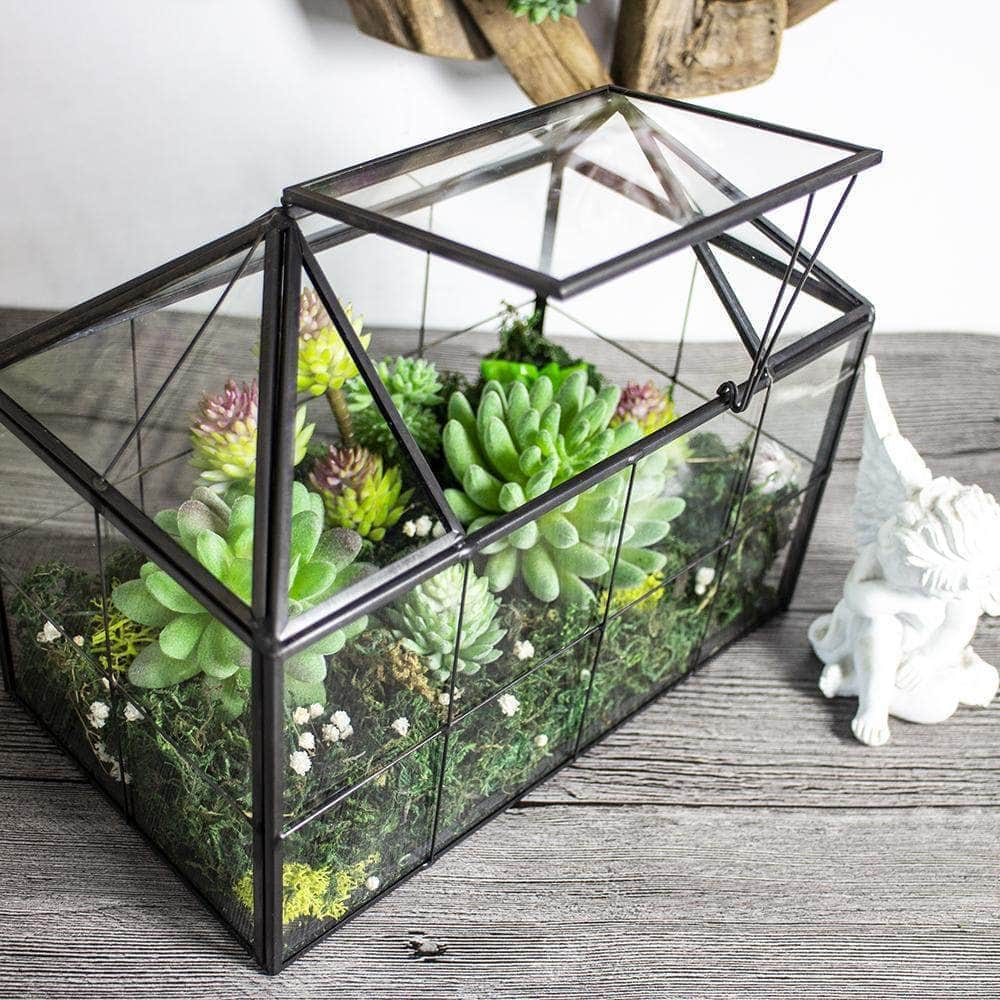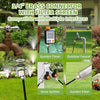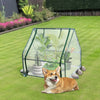
How to Plant Succulents Indoors: A Guide to Creating Thriving Terrariums
Succulents, with their vibrant colors and architectural shapes, have become a popular choice for indoor gardeners.These low-maintenance plants thrive in dry climates and require minimal attention, making them ideal for busy individuals or those new to the world of houseplants. Ferrisland glass terrariums offer a unique and visually appealing way to showcase these captivating plants, creating miniature ecosystems within your home. This guide will delve into the art of planting succulents indoors, with a specific focus on creating a thriving terrarium environment.
Source: Ferrisland
The Allure of Terrariums
Terrariums are self-contained ecosystems housed in a transparent container, typically made of glass. They offer a number of benefits for growing succulents:
- Controlled Environment: Terrariums provide a stable environment with increased humidity, which can be particularly beneficial for some succulent varieties that appreciate a slightly more humid atmosphere than typical indoor settings.
- Low Maintenance: The enclosed nature of a terrarium helps retain moisture, reducing the frequency of watering needed for your succulents.
- Visually Appealing: Terrariums showcase succulents in a miniature landscape, creating a decorative and captivating focal point in your home.
- Compact Design: Terrariums are space-saving, making them ideal for apartments or areas with limited space.
Source: Ferrisland
Choosing the Right Terrarium
Selecting the appropriate terrarium is crucial for the success of your succulent arrangement. Here are some key factors to consider:
- Size: Terrariums come in various sizes, from small tabletop containers to large floor-standing displays. Choose a size that accommodates the number of succulents you plan to plant and allows for adequate air circulation within the terrarium.
- Material: Glass terrariums are the most popular choice due to their clear visibility, allowing you to admire your succulent display from all angles. However, terrariums can also be crafted from acrylic or even recycled materials. Ensure the chosen material is transparent and allows for sufficient light penetration.
- Open or Closed Terrarium: Open terrariums have an opening at the top, allowing for greater air exchange and preventing excessive moisture buildup. Closed terrariums are fully sealed, creating a higher humidity environment. Open terrariums are generally better suited for most succulent varieties, as they prefer drier conditions.
This Ferrisland glass house terrarium has an opening door at the top and sometimes you can close it to prevent pets to disturb it, which it our star product.
Source: Ferrisland
Selecting Succulents for Your Terrarium
The next step involves choosing the succulents that will flourish in your terrarium. Here are some tips for making the right selections:
- Light Needs: Most succulents require bright, indirect sunlight. Choose varieties known to thrive in these conditions. Some popular indoor succulent options include jade plants, aloe vera, hens and chicks, and haworthias.
- Size and Growth Habit: Consider the mature size of the succulents you select and choose varieties that will complement each other within the terrarium's confines. Plants with a compact growth habit are ideal for terrariums.
- Color and Texture: Succulents come in a wide range of colors, shapes, and textures. Play with contrasting colors and textures to create a visually appealing arrangement.
Creating a Thriving Terrarium Environment
Once you have your terrarium and chosen succulents, it's time to assemble your masterpiece:
- Drainage Layer: Terrariums typically lack drainage holes. To prevent waterlogging, which can damage succulent roots, create a drainage layer at the bottom of your terrarium. Line the bottom with pebbles, gravel, or broken pieces of terracotta pots. The depth of the drainage layer will depend on the size of your terrarium, but generally, an inch or two is sufficient.
- Substrate: Fill the terrarium with a well-draining succulent potting mix. Commercial succulent mixes are readily available, or you can create your own by combining potting soil with perlite or coarse sand for improved drainage.
- Planting: Carefully remove your succulents from their nursery pots. If the roots appear overly wet, allow them to dry out for a day or two before planting. Gently loosen the roots and position the succulents within the terrarium, ensuring they are spaced appropriately for future growth. Fill in around the base of the plants with potting mix to secure them in place.
Maintaining Your Terrarium
With your terrarium assembled, here are some essential tips for ongoing care:
- Light: Place your terrarium in a location that receives bright, indirect sunlight for several hours per day. Avoid direct sunlight, as this can scorch your succulents.
- Watering: Watering is crucial for maintaining healthy succulents, but overwatering is a major threat. Water your terrarium sparingly, allowing the soil to dry out completely between waterings. The frequency of watering will depend on several factors, including the size of your terrarium, the type of succulents planted, and the amount of light it receives. Err on the side of underwatering rather than overwatering.










